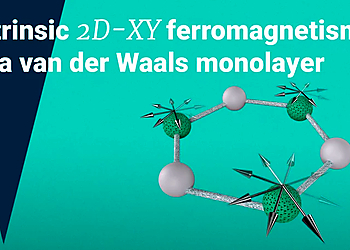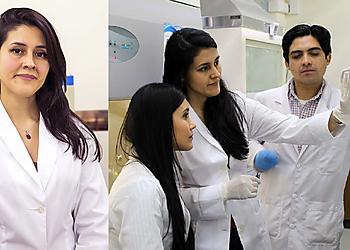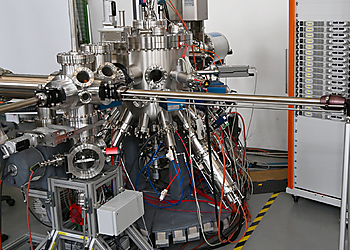News
Magnetism in Two Dimensions Goes “Easy-Plane”

Researchers at the Max-Planck Institute of Microstructure Physics in Halle, Germany, in collaboration with the Helmholtz-Zentrum Berlin, Germany and the ALBA Synchrotron, Barcelona, Spain, have discovered the first two-dimensional ferromagnetic system with a special property known as “easy-plane” magnetic anisotropy. This achievement was the result of fabricating a single atomic layer of chromium tri-chloride on a graphene substrate over a large area, and its investigation with highly sensitive in-situ magnetic measurements. What is special about this type of easy-plane magnet is that it could support the transport of electron spins without consuming any energy, and so lead to a new generation of highly energy-efficient, 2D spintronic devices.
The First LT STM in South America: Nanobiomaterials Laboratory, Universidad Técnica Federico Santa María, Chile

Scienta Omicron is supremely proud and thrilled to announce that we have delivered the first Low Temperature Scanning Tunneling Microscopy (LT STM) to the South American continent. The first ever LT STM has been delivered to Nanobiomaterials Laboratory, Universidad Técnica Federico Santa María, Chile. Prof. Carolina Parra Gonzalez, the director of the Nanobiomaterials Lab comments: “The LT STM will become an extremely useful tool for the local and international “nano”-community comprised of physicists, chemists, and biologists – allowing many interdisciplinary collaborations.”
A New Platform for Controlled Design of Printed Electronics with 2D Materials

A team of scientists have shown how electricity is transported in printed 2D materials, paving the way for design of flexible devices for healthcare and beyond. They identify what properties of 2D material films need to be tweaked to make electronic devices to order, allowing rational design of a new class of high-performance printed and flexible electronics. Lead researcher Dr Felice Torrisi, from the Department of Chemistry at Imperial College London, says: “Our results have a huge impact on the way we understand the transport through networks of two-dimensional materials.”
University of Nottingham: New MIP for Epitaxial Growth and In-situ Analysis of 2D Semiconductors

Scienta Omicron has recently delivered a new Materials Innovation Platform (MIP) for epitaxial growth and in-situ analysis of 2D semiconductors (EPI2SEM) at the University of Nottingham. The new Ultra-High Vacuum (UHV) MIP combines a PRO-75 MBE for thin-film synthesis, a NanoESCA module for band structure and chemical analysis, and a Multiprobe Prep module with VT SPM for surface morphology studies. All modules are interconnected by a Linear Transfer Line (LTL).
